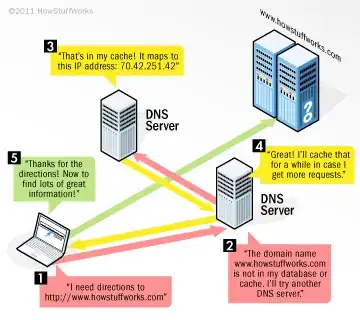I'm learning pentesting from books. So far I thought I know about DNS but now I'm completely lost and confused.
well, I know what happens when you enter domain name in your browser:

Say, I've bought a domain on name.com. So, all my DNS information will be stored with name.com right? Because I can manage my domain information by logging into name.com.
Now say, I'm hosting my website on hostmonster.
Me: Hey, I want to buy some space on your server.Here is the payment for it
Hostmonster: Thanks, We are providing you space on server with IP
12.34.56.78. Now go and update it for your domain name with your registrar.
This is what I expect to happen. But no it doesn't happen.Instead, Hostmonster gives me two nameservers NS1.HOSTMONSTER.COM or NS2.HOSTMONSTER.COM. WHY?? I thought name.com was having the nameservers and it was containing my information. Now where did this hostmonster nameservers come into picture. its confusing. please clarify what exactly is happening?.
EDIT: I've asked same question on superuser.com (How exactly does DNS work?) and I got a better answer there. Now, I understand it properly.